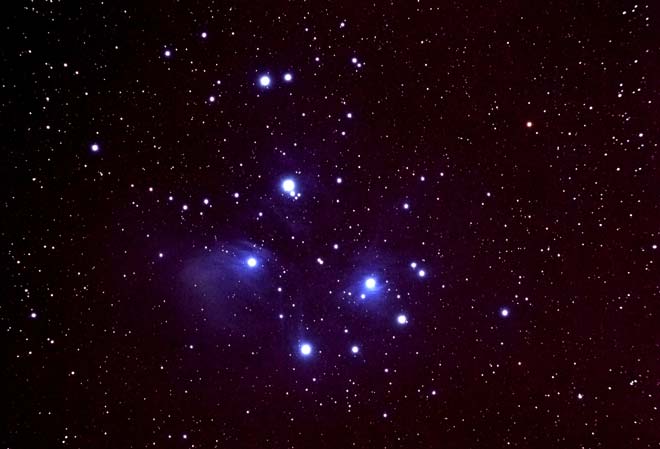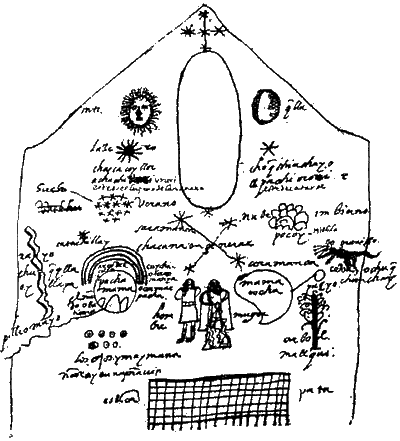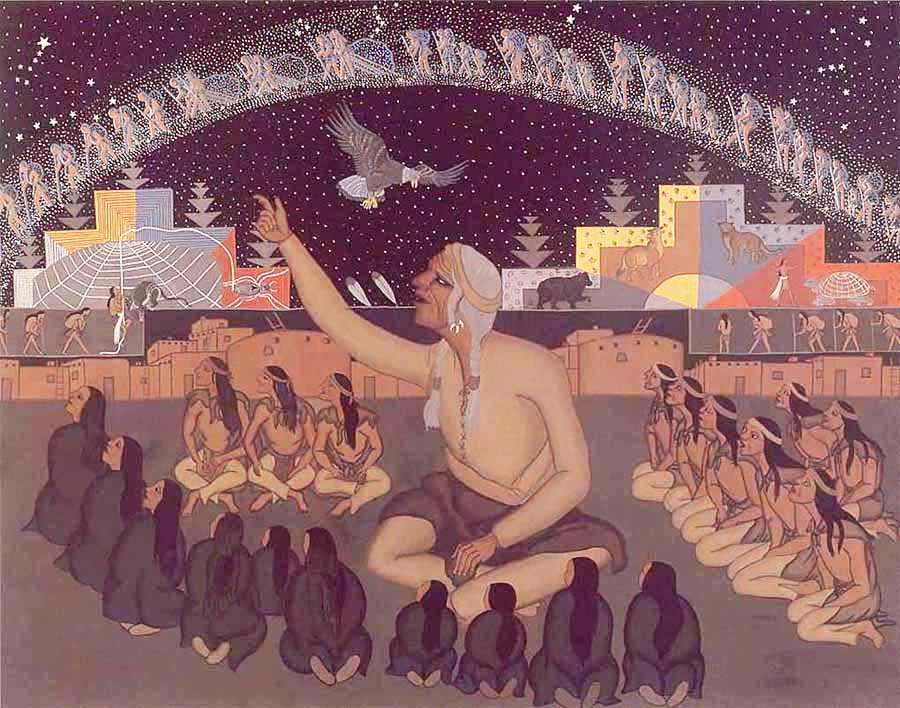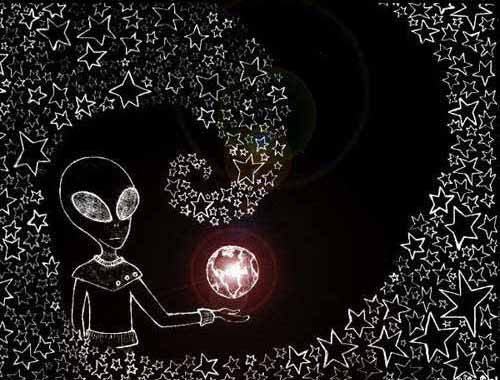 |
| http://www.teara.govt.n |
The Pleiades Star system influenced our ancient cultures, do they still influence us today? Read a recent alleged channeled message from the Pleiadians here.
All Credit // Exerts Taken From:
Crystal Links
// www.crystalinks.com
// www.crystalinks.com
The Pleiades in Folklore
The alignment in the heavens is like a blueprint upon which those on the planet can plan their daily, weekly, monthly, and yearly activities. The heavens were also the way they plotted their seasons so they would know when to plant and when to harvests, when the waters would come and when it would be dry. In essence they worshipped those from the skies, the Pleiades being a major factor for many civilizations.
The Pleiades' high visibility in the night sky has guaranteed it a special place in many cultures, both ancient and modern.
Read below on what specific cultures were influenced, and how:
Bible: The Pleiades are mentioned three times in the Bible, twice by name and once by reference, in Job 9:9, again in Job 38:31, and alluded to in Amos 5:8.
Hebrew - Kimah: a cluster
Egypt - the Pleaides represent the goddess Neith, the "divine mother and lady of heaven".
Japan - the Pleiades are known as Subaru, and have given their name to the car manufacturer whose logo incorporates six stars. The Subaru Telescope, located in Mauna Kea Observatory on Hawaii, is named after the Pleiades.
China - Kimah - The Pleiades seem to be the among the first star mentioned in astronomical literature, appearing in Chinese annals of 2357 B.C. China - The Blossom Stars and Flower Stars. In Chinese constellations, they are also mao, the Hairy Head of the white tiger of the West.
Hindu:
- the Hindu God Kartikeya means Him of the Pleiades.
- the Flames of Agni (the god of Fire): the divinities of fire in its beneficent form and the wet nurses for Kumara, the god of War.
- Astrology: In Western astrology they represent coping with sorrow and were considered a single one of the medieval fixed stars. As such, they are associated with quartz and fennel. In Hindu astrology the Pleiades were known as the asterism (nakshatra) Krittika (which in Sanskrit is translated as "the cutters.")
- The Pleiades are called the star of fire, and their ruling deity is the Vedic god Agni, the god of the sacred fire.
Rome - The Bunch of Grapes and The Spring Virgins
Old English, Old German, Russian, Czech and Hungarian - The Hen and Chicks
Vikings: Freya's hens - their name in many old European languages compares them to a hen with chicks
Aztec - called the Pleiades 'Tianquiztli - marketplace or gathering place
Paraguay - The Abipones tribe worshipped them as their ancestors.
Inca - called the Pleiades 'Seed Scatterer' or 'Sower'
Peru - Verano - which means summer, or dry season - possibly in association with the Pleiades ritual at the summer solstice during the dry season. A Peruvian cosmological chart from around 1613 seems to show the Pleiades. Pachacuti Yamqui, an Inca nobleman, drew the chart to show the objects that were depicted on the temple in Cusco, adding Spanish and Quechua notations

New Zealand: Heliacal risings very often mark important calendar points for ancient peoples. The heliacal rising of the Pleiades (around June) also begins the new year for the Maori of New Zealand, who call the Pleiades Matariki. There is an analogous holiday in Hawaii known as Makalii.
Indigenous Australians: Depending on the tribe or clan, some Indigenous Australian peoples believed the Pleiades were a woman who had been nearly raped by Kidili, the man in the moon.
Another version, often painted by Gabriella Possum Nungurayyi as this is her dreaming (or creation story), daughter of the late Clifford Possum Tjapaltjarri from the Central desert art movement of Papunya, depicts the story of seven Napaltjarri sisters being chased by a man named Jilbi Tjakamarra. He would practice love magic to seduce the sisters but they had no intention of being with him and ran away. They sat down at Uluru to search for honey ants but when they saw Jilbi, they went to Kurlunyalimpa and with the spirits of Uluru, transformed into stars. Jilbi transforms himself into what is commonly known as the Morning Star in Orion's belt, thus continuing to chase the seven sisters across the sky.
Pitjantjatjara Tribe - the Pleiades are linked to Kungkarungkara - the ancestral women.
Australian Aboriginals - Adnyamathanha tribe - Makara: the Pleiades are the wives of stars in the Orion constellation
South Africa - Khuseti: the stars of rain, or rain bearers. (Khoikhoi tribe)
In the Swahili language of East Africa they are called "kilimia" which means "digging stars" as their visibility was taken as a sign to prepare digging as the onset of the rain was near.

Native Americans
One Native American legend ties the Pleiades to the home of a Saviour. Some believe that all tribes in North America came from the Pleiades. That they are actually descendants and had been given a task by the Pleiadians to keep the Earth safe.
Another legend tells of seven maidens who were being pursued by a ferocious bear. Kneeling to pray for help, they called on the Indian gods, who raised the ground where they were located high into the air. Angered, the bear clawed at the earth in a vain attempt to reach them. After leaving huge claw marks in the unyielding earth, the bear finally gave up and retreated. The maidens were turned into stars and placed in the sky forever out of harm's way. The site is what we now call the Devil's Tower, scene of the climactic alien visit in the movie 'Close Encounters of the Third Kind.'
Sioux have a legend that linked the origin of the Pleiades to Devils Tower. According to the Seris (of northwestern Mexico), these stars are seven women who are giving birth. The constellation is known as Cmaamc, which is apparently an archaic plural of the noun cmaam "woman". It was common among the indigenous peoples of the Americas to measure keenness of vision by the number of stars the viewer could see in the Pleiades, a practice which was also used in historical Europe, especially in Greece.
Early Dakota stories speak of the Tiyami home of the ancestors as being the Pleiades. Astronomy tells us that the Pleiades rise with the sun in May and that when you die your spirit returns south to the seven sisters.
Navajo named the Pleiades the 'Sparkling Suns' or the 'Delyahey', the home of the 'Black God'.
Iroquois pray to them for happiness.
Cree mythology speaks of their people coming to Earth from the seven stars in spirit form first and then became flesh and blood.
Hopi - called the Pleiadians the 'Chuhukon', meaning those who cling together. They considered themselves direct descendants of the Pleiadians. Hopi Prophecy and Legend


In Greek mythology, the Pleaides represented the Seven Sisters. Greek astronomer Eudoxus of Knidos (c. 400-350 BC) set them apart as a distinct constellation: the Clusterers. Greek sailors were said to consult the skies before setting sail. If the Pleiades were visible, all was well. Otherwise, storm conditions were likely.. They are mentioned in Homer's Iliad and Odyssey.
- Maia - eldest of the seven Pleiades, was mother of Hermes by Zeus
- Electra was mother of Dardanus and Iasion by Zeus.
- Taygete was mother of Lacedaemon, also by Zeus.
- Alcyone was mother of Hyrieus by Poseidon.
- Celaeno was mother of Lycus and Eurypylus by Poseidon.
- Sterope (also Asterope) was mother of Oenomaus by Ares.
- Merope youngest of the seven Pleiades, was wooed by Orion. In other mythic contexts she married Sisyphus and, becoming mortal, faded away. She bore to Sisyphus several sons.
One of the most memorable myths involving the Pleiades is the story of how these sisters became, quite literally, stars. According to some versions of the tale, all seven sisters committed suicide because they were so saddened by either the fate of their father, Atlas, or the loss of their siblings, the Hyades. In turn Zeus, the ruler of the Greek gods, immortalized the sisters by placing them in the sky. There these seven stars formed the constellation known thereafter as the Pleiades.
The Greek poet Hesiod mentions the Pleiades several times in his Works and Days. As the Pleiades are primarily summer stars, they feature prominently in the ancient agricultural calendar.
READ THE ORIGINAL POST FROM CRYSTAL LINKS HERE
No comments:
Post a Comment